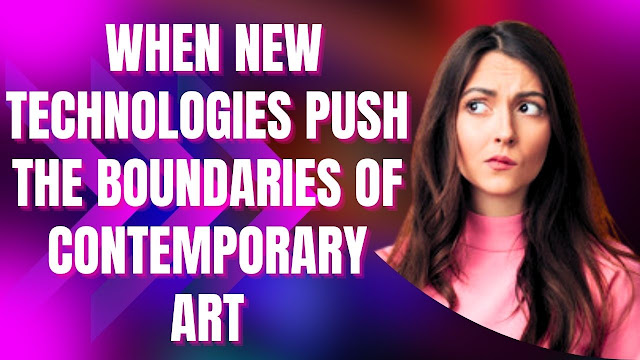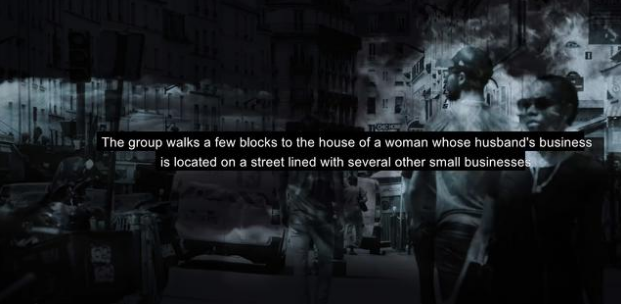Artifiacial Intelligence
In the era of artificial intelligence, new technologies are clearing uncharted territories. The field of possibilities opened up by the current revolution offers tremendous creative potential. The future is here. He already was yesterday. From the 1950s, the “thinking machine” fascinated science fiction authors. Since then, a milestone has been reached, with the amount of data processed by computers far exceeding the capacity of the human brain. We used to teach machines, but now they learn by themselves. Until they acquire their own autonomy… and teach us about ourselves. The paradigm shift is radical. In 2013, in "Her", Spike Jonze imagined a film in which a man fell in love with a female voice produced by artificial intelligence. Anticipation became reality.
The two curators of the exhibition at the Canadian Cultural Centre, Alain Thibault, director of the International Digital Art Biennial of Montreal, launched in 2012 and Dominique Moulon, art critic and early promoter of digital arts on this side of the Atlantic, speak together of "digital contemporary art". “The term “Machine Learning”, which dates from the 1980s, is in tune with the times, explains Dominique Moulon. Instead of considering this tech trend, we looked at learning: “Human Learning”. What interests us is the imagination revealed by new technologies. There is today no societal problem that is not initiated, revealed by digital. We talk about uberization, the fear of the robot, of this “other mechanic” that will take our jobs if we lose our creativity. Machines are changing our habits. But what is art for, if not to shake up our certainties, and give keys to understanding society?
What do artists learn from machines? While some pieces have an air of deja vu, playful but based on simple interaction – crossing an arch to play with its distorted image on a screen – others really give food for thought. Grégory Chatonsky's installation thus combines structure, sculptures, and screens. A universe nourished by hundreds of human dreams that the machine integrates into a network of artificial neurons to create others, against a background of synthetic voice.
“Scientists now consider nature to be the most advanced of technologies, and seek inspiration from it.”
Matthew Biederman presents a conceptual assembly of neon whose colors vary according to the location of the viewer; another of his creations generates naturalistic patterns in perpetual motion on the screen, via an algorithm, following a principle described by the British mathematician Alan Turing. Scientists now consider nature to be the most advanced of technologies, and seek inspiration from it.
Here again, an interactive and sound work by a historical pioneer of the genre, David Rokeby. There, the images of Douglas Coupland, the author of “Generation X”: faces masked with abstract tints, undetectable by facial recognition. Decoding the language of machines, and appropriating it to create new forms is not all. Art takes a critical look at the information society, which includes the surveillance and control of biometric data.
I start with an idea. I consider technology a collaborator in my work. "It's an intimate relationship,” explains Sabrina Ratté, a Quebec artist based in Paris, who presents an installation of moving images, halfway between photo and video. On the big screen, the video of robots with human faces by Frenchwoman Justine Emard sows confusion between reality and the virtual world. Robots that learn in contact with their environment without reproducing our behaviors... Returning from a residency in Japan, she noted, however, that “France, in general, is quite technophobic." We first want to master everything related to robotics, and artificial intelligence. We are ethical before creating things. In Japan, it is the first of all the practices. Canada is moving forward on both aspects, with an ethical policy and without being afraid to approach these technologies.
Apart from cultural references (First Nations for Canada), it is difficult to distinguish a significant difference between Canadians and French. With an international tendency, artists are in tune. In France, where the Cartesian spirit is willingly preoccupied with labels, our view of this type of creation would however be less open than elsewhere. Another reason to discover these artists. State-of-the-art technological tools, desire to move the lines, innovative creations: digital art has nothing to envy other visual arts.





0 Comments